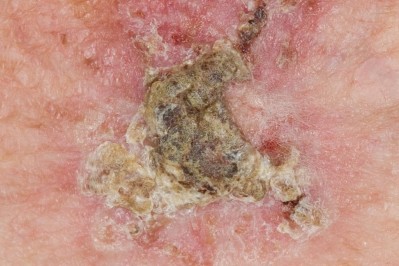Neurodiversity information for parents and young people
About actinic keratoses
Actinic keratoses are patches of sun-damaged skin. They are usually found on parts of the body that are exposed to the sun. For example the forearms, backs of the hands, face, ears, bald scalp and lower legs. They may also occur on the lips.
Actinic keratoses may look unattractive and sometimes they can itch. They are not contagious (catching).
Generally they are harmless, but there is a small risk that the patches can progress into a form of skin cancer.
People most at risk are those who have several actinic keratoses and people who take immunosuppressive drugs for accompanying conditions.
Causes
Actinic keratoses are caused by sun exposure over many years. This can be from sunbathing, sunbed use, outdoor work or recreational activities.
They are more common in older people.
People with fair-skin, blue eyes and red or blonde hair (who burn easily in the sun), are at particular risk.
Symptoms
The affected skin often feels rough and scaly. Some people find the patch to be itchy or sore.
What they look like
- Actinic keratoses vary in appearance. One person can have two patches which look quite different.
- At first they are hard to see, but they feel rough like sandpaper.
- They can grow to 1 or 2 centimetres across.
- Sometimes they are skin coloured, or pink or reddish brown.
- Occasionally they develop a thick, scaly, warty layer.
- The surrounding skin often looks blotchy, freckled and wrinkled.

Can they be cured?
Yes, but other patches may develop from the surrounding sun damaged skin.
Occasionally, small actinic keratosis patches disappear independently, but most remain.
How they are diagnosed
Usually the appearance of an actinic keratosis patch is enough to allow doctors to make a diagnosis.
If someone has several actinic keratoses or is on immunosuppressive drugs, we will assess them carefully because they may be at risk of skin cancer.
Sometimes a sample of the patch, or the whole patch, is removed surgically under local anaesthetic. It is then examined in a laboratory, especially if doctors suspect the person has early skin cancer.
Treatments available
We can treat the patches if they:
- look unattractive
- grow quickly
- cause other symptoms (such as bleeding or forming an ulcer).
Your medical team will discuss treatments with you.
Freezing with liquid nitrogen (cryotherapy)
This is an effective treatment which does not normally leave a scar, but it can be painful (see More information section).
Surgical procedure usually called ‘curette’ (scrape)
This requires a local anaesthetic injection into the affected patch.
Healthcare professionals then scrape off the actinic keratosis with a sharp spoon-like instrument (or they cut it out and close the wound with stitches).
Surgical removal leaves a scar, but it gives hospital staff a skin sample that can be tested in a laboratory to confirm the diagnosis.
Creams
In some cases a cream or gel can be prescribed for use at home. This may include 5-fluorouracil, imiquimod. These are especially effective for someone who has several actinic keratoses, but they cause considerable temporary inflammation (redness and soreness) of treated areas. Diclofenac and retinoic acid are other drugs in cream or ointment form that are helpful when applied to milder actinic keratoses. They have fewer side effects.
Photodynamic therapy
A cream is applied and a light is shone onto the affected areas. The light activates a chemical in the cream which then treats the actinic keratosis. This treatment is only available in certain hospitals (see More information section).
Laser therapy
Laser treatment can be useful, particularly for actinic keratoses on the lips, but it is not offered as an NHS service.
How to protect your skin
Protecting your skin from the sun will help reduce the number of new actinic keratoses. It can also reduce your risk of getting sun related skin cancer.
Follow these recommendations.
- Protect yourself from the sun between 11am to 3pm (when the sun is at its strongest).
- Wear protective clothing: hat, long sleeves, long skirt or trousers.
- Apply a sunscreen regularly to exposed skin before going into the sun. Use a brand with sun protection factor of 30 or above which can also block both UVA and UVB light. Re-apply the sun cream according to the manufacturer’s recommendations, especially if you are sweating or have been swimming when you are out in the sun.
- Protect your children from the sun in the same way, to reduce their risk of developing actinic keratoses.
- Avoid artificial sunlamps, including sunbeds and UV tanning cabinets.
- Be skin aware. Examine your own skin every few months.
Vitamin D advice
Check and monitor your vitamin D levels if you actively avoid sun exposure.
Your GP may advise you to take a vitamin D supplement to avoid vitamin D deficiency.
You can also increase your intake of foods high in vitamin D, such as oily fish, eggs, meat, fortified margarines and cereals. Vitamin D3 supplements are widely available from health food stores.
Make a GP appointment if you notice the following
- changes to your skin, or
- an actinic keratosis becomes tender, starts to develop into a lump or starts to bleed. These changes can indicate early skin cancer. Early treatment for skin cancer is usually effective.
More information
Further NHS information on actinic keratoses
Contact information
Plastics and Dermatology Department, 9am to 5pm, Monday to Friday
Telephone: